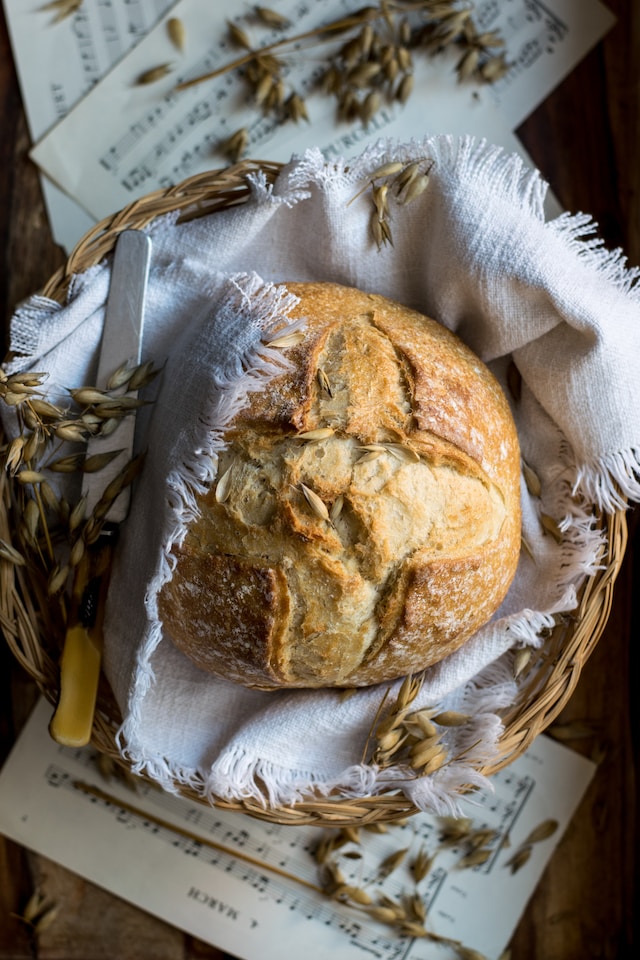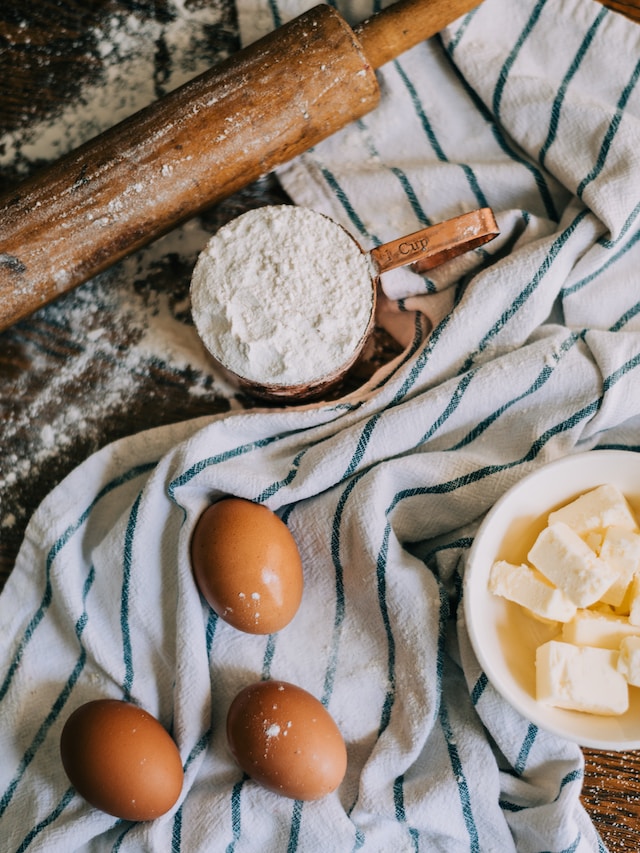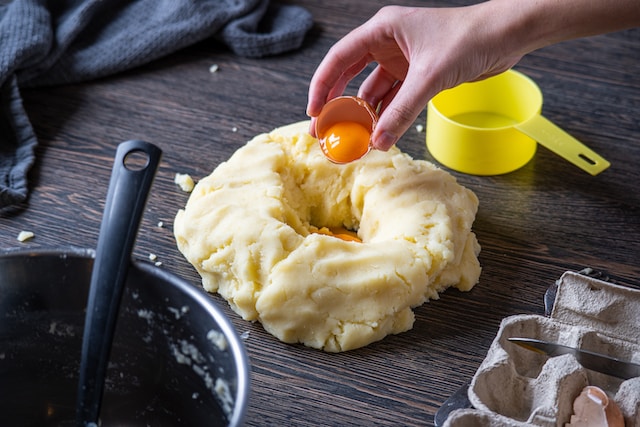
Entering the world of bread baking is embarking on a journey that unfolds through the senses—a symphony of aromas, a delight for the eyes, and a delicate dance of flavors. It is a craft that has stood the test of time, dating back to our ancestors who harnessed the alchemy of yeast and grain to create the staple sustenance we know today. Mastering the art of bread baking requires patience, precision, and a deep appreciation for the symbiotic relationship between science and creativity.
Let’s dive into the realm of bread baking, unraveling the secrets and techniques that have been passed down through generations of bakers. From the foundational principles of ingredient selection and measurement to the complex dance of kneading and proofing, we will explore the multifaceted world of bread baking, one loaf at a time.
Essential Baking Ingredients
Flour
A great bread starts with great flour. Flour is the fundamental ingredient in bread baking, providing structure and texture. There are various types of flour, each with its unique characteristics. All-purpose flour, commonly used in everyday bread recipes, strikes a balance between protein content and versatility. Bread flour, on the other hand, contains a higher protein content, making it ideal for recipes that require a chewy and well-developed crumb. For those looking to explore more rustic flavors, whole wheat flour and specialty flours like rye or spelt add depth and complexity to your baked goods.
Yeast
Yeast, the humble microorganism, holds the power to transform a dense ball of dough into a light and airy loaf of bread. Whether using active dry yeast or instant yeast, both varieties play a crucial role in the fermentation process. Yeast feeds on the sugar in the dough, producing carbon dioxide gas that gets trapped in the gluten network, causing the dough to rise. It’s essential to activate the yeast properly by dissolving it in warm water and feeding it with a pinch of sugar, ensuring a lively and vigorous fermentation.
Salt
Salt may seem like a minor player in bread baking, but it plays a significant role in developing flavors and strengthening the dough structure. Its primary function is to control the yeast’s fermentation process, preventing it from becoming overly active and resulting in a dough that is difficult to handle. Additionally, salt adds a subtle flavor and enhances the overall taste of the bread. Remember, the amount of salt used can vary based on personal preference, but be cautious not to omit it, as it affects the bread’s texture and overall quality.
Water
Water, the elixir of life, is a staple ingredient in bread baking. It hydrates the flour and activates gluten development, leading to a cohesive and elastic dough. The water’s temperature is crucial, as it affects the yeast’s activity and ultimately the dough’s rising speed. Generally, lukewarm water around 100-110°F (38-43°C) is ideal for most bread recipes. However, it is essential to follow the recipe’s guidelines, as different bread types may require specific water temperatures for optimal results.
Sugar
Sugar not only adds sweetness to bread but also feeds the yeast during fermentation, resulting in a lighter and more flavorful loaf. It helps in activating the yeast and accelerating the rising process. Common types of sugar used in bread baking include granulated sugar, honey, and brown sugar. Each imparts its distinct flavor profile, contributing to the overall character of the bread. When experimenting with bread recipes, consider adjusting the sugar quantity to achieve the desired level of sweetness.
Fats
Fats, such as butter, oil, or lard, play a vital role in bread baking by enhancing the dough’s tenderness and keeping the bread moist. They also add richness and flavor to the bread, contributing to its overall texture. Butter, with its buttery aroma, lends a delicate and luscious quality to loaves, while oils provide a neutral flavor and soft texture. The addition of fats is particularly crucial when baking enriched breads, such as brioche or challah, where a luxurious crumb and a golden, shiny crust are desired.

Baking Techniques and Tips
Mixing: The first step in bread baking is mixing the ingredients to form a cohesive dough. There are two primary mixing methods: the traditional hand-mixing method and the modern stand mixer method. Both techniques have their merits, but the key is to ensure that all the ingredients are well incorporated without overmixing, as this can lead to tough bread.
Kneading: Once the dough is mixed, it’s time to knead. Kneading is a rhythmic process of stretching, folding, and pressing the dough to develop the gluten network. Gluten gives bread its structure and elasticity. Techniques for kneading vary, but the aim is to achieve a smooth and supple dough. It may take some practice to master, but with time, you’ll develop a feel for the dough and know when it’s ready.
Proofing: Proofing is the stage where the dough rises and ferments, bringing the flavors and textures to life. Proper proofing is essential for achieving a light and airy crumb. The duration and temperature of proofing depend on the recipe and desired outcome. Whether proofing at room temperature or using a controlled environment like a proofer or oven with a proofing setting, it’s crucial to give the dough enough time to double in size.
Shaping: Shaping the dough is an art form in bread baking. This is where you give the dough its final form, whether it’s a classic loaf, a round boule, or intricate braids. Shaping involves gently stretching and tucking the dough to create surface tension. This helps the dough maintain its shape during the final rise and baking process.
Scoring: Scoring is a technique used to create decorative patterns on the surface of the bread. It also serves a functional purpose by allowing the bread to expand during baking, preventing it from bursting. Using a sharp blade or bread lame, make confident slashes on the dough’s surface, experimenting with different patterns to showcase your artistic flair.
Baking: The culmination of the bread baking process is baking. Preheating the oven is crucial to creating the ideal baking environment. The oven should be hot enough to create a burst of steam when the bread enters, promoting a crisp crust. Baking times vary depending on the recipe and loaf size, so be sure to follow the instructions closely. Keep an eye on the bread in the oven, as golden brown perfection can quickly turn into a burnt disaster.
Cooling: Once the bread is baked to perfection, resist the temptation to slice into it immediately. Allow the loaf to cool on a wire rack for at least 30 minutes to an hour. This cooling period allows the bread to set and finish its final phase of cooking. Slicing into a hot loaf may cause it to become gummy or lose its shape.
Advanced Baking Techniques
Mastering bread baking is a journey of continuous learning and refinement. Once you have mastered the foundational principles and techniques, it’s time to venture into the realm of advanced baking techniques. These techniques will elevate your bread baking skills and allow you to create breads that are truly works of art.

Laminated Doughs: Laminated doughs are a hallmark of pastry baking, but they can also be applied to bread baking to create stunning and decadent loaves.
By incorporating layers of butter into the dough through a process of folding and rolling, you can achieve a flaky and tender crumb that is reminiscent of croissants and Danish pastries. Explore the techniques of laminating dough, from creating a butter block to the intricate process of folding and rolling it into the dough. The result is a bread with a delicate and buttery interior, encased in a beautifully layered crust.
Pre-Ferments: Pre-ferments are a technique used to enhance the flavor and texture of bread by fermenting a portion of the dough before incorporating it into the final dough. This technique not only adds depth to the flavor profile of the bread but also improves its keeping qualities and overall structure. Common types of pre-ferments include poolish, a wet sponge-like mixture, and levain, a sourdough starter. Experiment with different pre-ferments and discover how they can transform your bread into something truly extraordinary.
Artisanal Shaping Techniques: Shaping dough is an art form in itself, and advanced shaping techniques can take your bread to the next level. From intricate braids to decorative patterns, these techniques require both skill and creativity. Explore the art of shaping breads like the challah, a Jewish braided bread, or the intricately designed pain au levain. These techniques not only create visually stunning breads but also contribute to the overall texture and crumb structure.

Experimental Flavors and Add-Ins: Bread baking is not limited to traditional flavors and ingredients. Push the boundaries of creativity by experimenting with unique flavors and add-ins.
From savory creations like bacon and cheddar bread to sweet combinations like chocolate and orange zest, the possibilities are endless. Discover the art of balancing flavors and textures and create breads that are truly one-of-a-kind.
Fermentation Control: Fine-tuning the fermentation process is key to achieving the perfect loaf of bread. Advanced bakers delve deep into the world of fermentation control, mastering techniques like retardation and controlled proofing. Retarding the dough in the refrigerator slows down the fermentation process, allowing for a more complex flavor to develop. Controlled proofing uses precise temperature and humidity control to achieve consistent results.
Decorative Techniques: Take your bread baking to the next level by exploring decorative techniques. From intricate scoring patterns to decorative stencils, these techniques add an element of artistry to your bread. Experiment with different scoring techniques to create stunning designs on the bread’s surface, or use stencils to add a touch of elegance to your loaf. Let your creativity run wild and transform your bread into a true masterpiece.
As you master these advanced baking techniques, remember that bread baking is a lifelong journey. Each loaf presents an opportunity to explore new flavors, techniques, and artistic expressions. Embrace the creativity and experimentation that comes with bread baking, and let your passion for this ancient craft guide you on a path of endless discovery.
